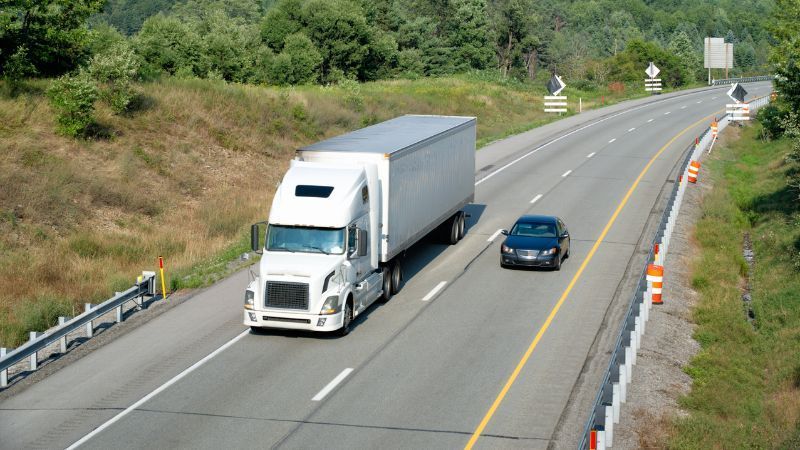Packing Strategies for Interstate Moves
Bryan Bloom • April 26, 2024

Packing up your life and moving across state lines can feel overwhelming.
Uncertainty about how to properly pack for an interstate move can be one of the main sources of stress. We at Kinetic Movers , your trusted full service Pennsylvania moving company, understand these complexities and are here to ensure your interstate move packing process is smooth and hassle free. As seasoned experts in the field, we are eager to offer you our wisdom, experience, and tips to make your move the easiest it can be. Unpacking the Reality of Interstate Moves Interstate moving services are a significant life event that comes with its own set of logistical challenges. Daunting as it might be, proper planning has an exponential value on the outcome of your move:- Timing is everything : Depending on the time of year, the expenses and logistics can fluctuate. Avoid peak moving times if possible.
- Distance matters : Interstate moves imply that you will be covering a long distance. Factor in the cost of fuel, time, and potential stops when planning your journey.
- Legality and paperwork : Every state has specific regulations regarding moving, such as insurance coverage, permits and other legal documentation. You need to be aware of these in advance.
Pre-Move Preparations
Preparation is the secret to a successful and stress free interstate move . Effective planning and organizing save you time, energy, and money.The Art of Downsizing
Reducing the number of items you have to move is one of the most effective ways to simplify your interstate move. It's all about figuring out what to keep, what to toss, and what to donate.- Create four categories : Keep, Sell, Donate, and Toss.
- Consider the cost of moving vs. replacement cost : If it costs more to pack and move an item than replacing it, it might be worth leaving behind.
- Start early : Give yourself plenty of time to sort through everything. It's better to do a little each day rather than cram everything over the weekend.
Organizing Your Belongings
Organization is the name of the game when it comes to packing. It’s important to group your belongings systematically, so unpacking in your new home is a breeze.- Categorize items : Group similar items together for easy packing and unpacking.
- Create an inventory list : Keep track of what's in each box with an inventory list.
- Collect supplies : Gather boxes of various sizes, bubble wrap, packing paper, and strong packing tape in advance.
Practical Steps for Packing
The actual packing process seems overwhelming until you break it down into manageable tasks.Packing Room by Room
The most efficient way to pack is to go about it room by room. This methodical approach provides a sense of progress and prevents the packing process from seeming endless. Here are our sure-fire steps for effective packing:- Start with infrequently used spaces : Packing items that you don’t use daily, such as guest rooms and storage rooms, is a great place to start.
- Handle fragile items with extra care : Wrap delicate items in bubble wrap or packing paper and cushion them well in their boxes.
- Use space efficiently : Fill gaps in boxes with small items or packing paper to maximize space and prevent items from shifting during the move.
The Science behind Packing Boxes
Packing boxes isn't as simple as throwing in items. Doing it correctly ensures the protection of your belongings during transit. Follow our step-by-step guide for packing boxes efficiently:- Choose the right box size : Light items go in large boxes, and heavier items go in smaller boxes. This helps prevent boxes from becoming too heavy to lift.
- Secure the bottom : Tape the bottom of each box with strong packing tape.
- Fill it right : Never overfill a box to the point it's bulging or too heavy to carry.
Handling Valuables and Sentimental Items
For valuable items, paperwork, and cherished heirlooms, consider taking extra precautions.- Document and insure valuable items : Ensure you have photographs and appraisals of your valuables. Consider purchasing moving insurance for added peace of mind.
- Pack important documents with care : Pack critical paperwork, such as birth certificates, house deeds, and financial documents in waterproof cases.
Working with Professional Moving Teams
You've decluttered, categorized, and packed up your house. Now it's time to determine how these boxes will actually get to your new home. Professional movers, such as Kinetic Movers, make this step a breeze.The Benefits of Professional Movers
You might wonder if hiring professionals is a luxury or a necessity. Let's consider the advantages:- Efficiency : Professional movers have the experience and skill to move quickly and effectively.
- Safety : Experts know how to protect your belongings throughout the moving process.
- Convenience : Pros provide the manpower and equipment needed, meaning less physical strain and stress for you.
- Time Saving : Opting for professional movers frees up your time to focus on other aspects of moving.
Engaging with Kinetic Movers
At Kinetic Movers, we pride ourselves on providing efficient, safe, and hassle free moving experiences. Our team of trained professionals ensures your belongings reach their new home in perfect condition. We offer:- Transparent Quotes : No hidden charges or last-minute surprises.
- Flexible Scheduling : We move according to your timeline.
- Comprehensive Services : From packing to unloading and setting up.
Putting Your Mind at Ease: Post-Move Checklist
Congratulations, the difficult part is over, and you've arrived at your new home! However, there are a few more steps to consider to fully settle in.- Unpacking : Start by unpacking essential items that you will need immediately. Remember to consult your inventory list and go through one box at a time. There's no need to rush; take your time and organize things the way you want from the beginning.
- Utilities : Make sure everything is working as it should - water, gas, electricity, and internet.
- New Address : Update your new address on all necessary documents, subscriptions, and contacts.
- Explore : Take some time to familiarize yourself with your new neighborhood. Find the nearest grocery store, pharmacy, hospital, and other important places.
Change Your Moving Mindset with Kinetic Movers
As we conclude this comprehensive guide to interstate move packing, it's crucial to remember that every moving experience is unique. Not all strategies will fit every situation, but this guide equips you with a generally effective approach and enough flexibility to tweak as per your needs. Here is a quick recap:- Declutter before you start packing : Less stuff equals less stress and less to unpack.
- Organization is key : Sort items by category and keep an inventory.
- Pack with care : Safeguard your belongings with the right materials and proper packing techniques.
- Consider the professionals : Expert movers can save time, reduce stress, and ensure the safe transport of your belongings.
- Prepare for arrival : A post-move checklist can help you settle into your new home more quickly and easily.



